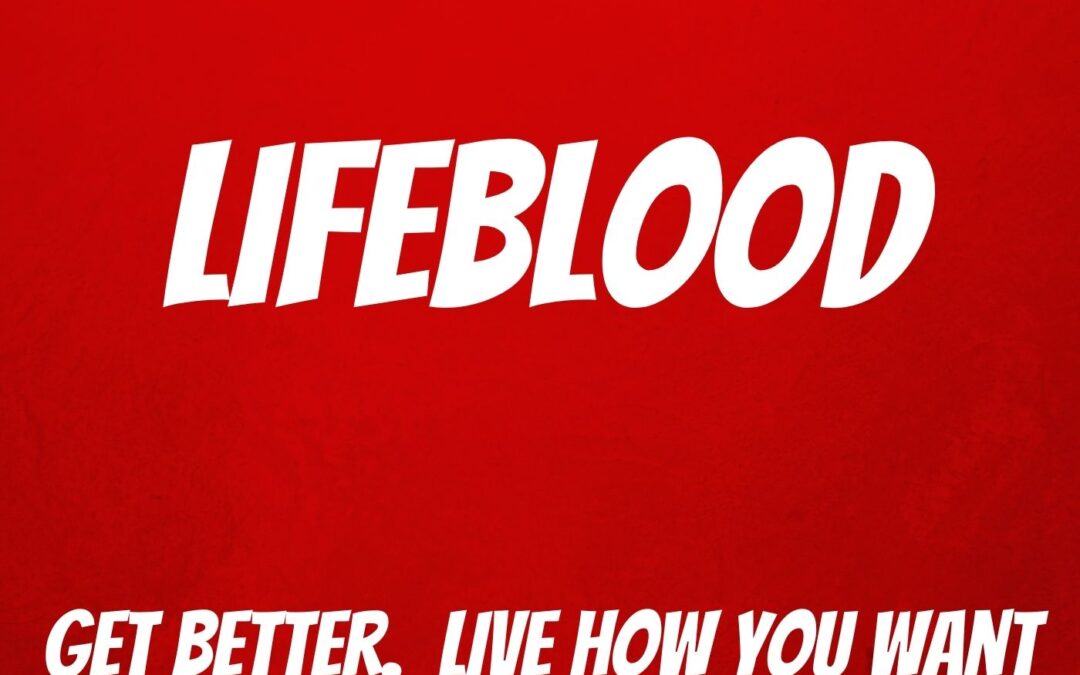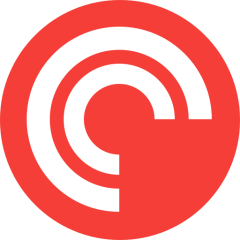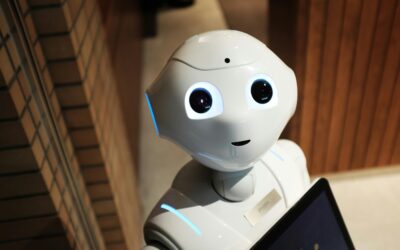House Insurance with Sean Harper
How is climate change disrupting the homeowner’s insurance industry and what should we expect to see moving forward? Sean Harper talks about the insurtech company changing the industry through AI and machine learning, how consumers are benefiting and what it’s like to work with Gary Vaynerchuk!
Listen to us On
About the Episode
LifeBlood: We talked about house insurance, the challenges climate change presents to the industry, how technology is helping consumers and disrupting the way business is done, and what it’s like to take a cmplay public via a SPAC with Sean Harper, CoFounder of Kin, an org fixing the homeowner’s insurance industry.
Listen to learn what it’s like to work with Gary Vaynerchuk and if he’s really as good as we all think he is!
You can learn more about Sean at Kin.com, Twitter, Facebook and LinkedIn.
Thanks, as always for listening! If you got some value and enjoyed the show, please leave us a review wherever you listen and subscribe as well.
You can learn more about us at MoneyAlignmentAcademy.com, Twitter, LinkedIn, Instagram, Pinterest, YouTube and Facebook or you’d like to be a guest on the show, contact George at Contact@GeorgeGrombacher.com.
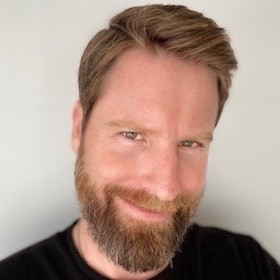
George Grombacher
Lifeblood Host
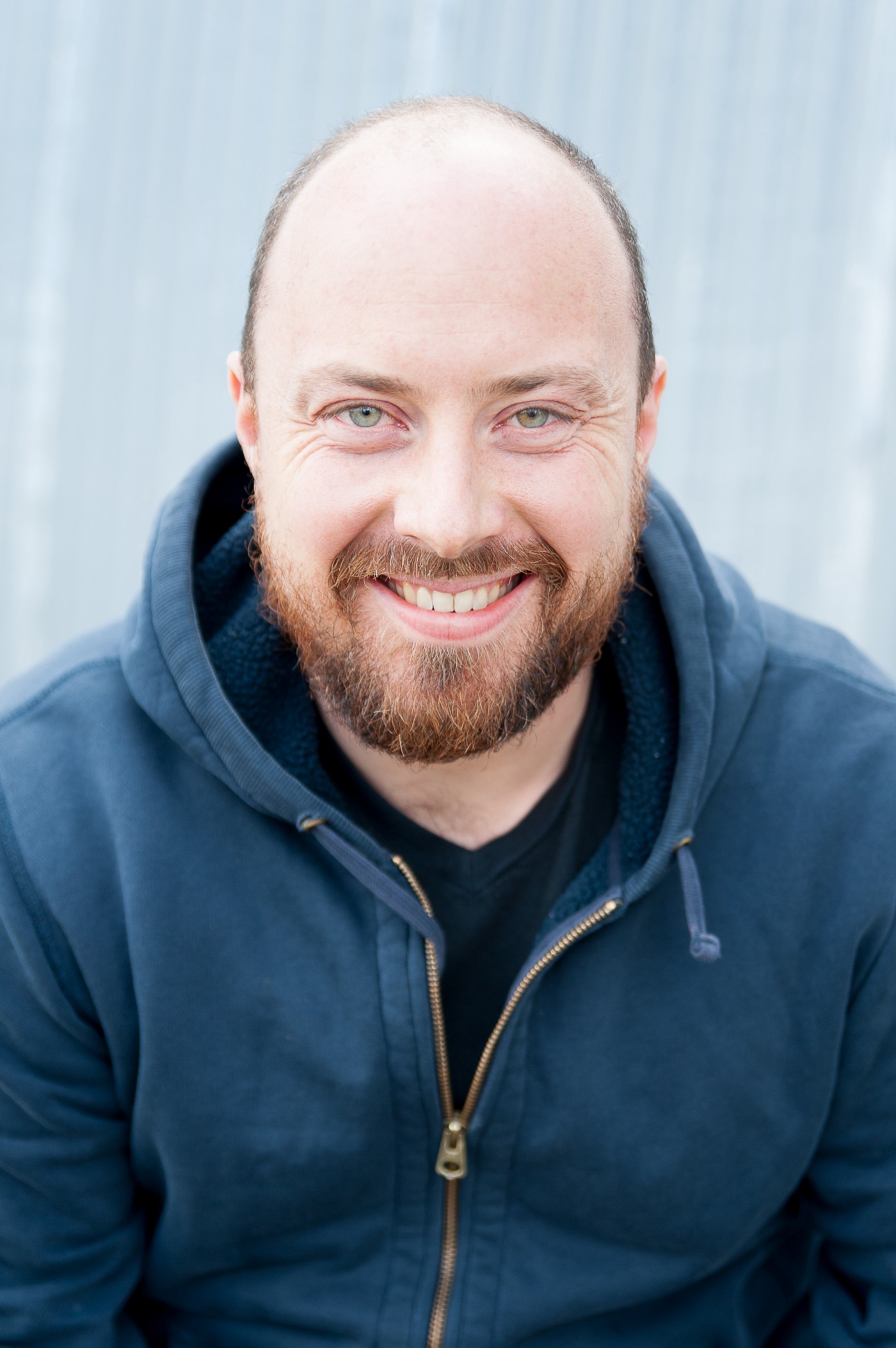
Sean Harper
Guest
Episode Transcript
Come on.
george grombacher 0:12
strong and powerful. Shawn Harper has returned to lifeblood. Welcome back, Shawn. Hey, thanks for having me. excited to have you back on Sean is the co founder of kin. They’re an organization fixing the homeowners insurance industry provided simple, personalized and affordable home insurance designed for you. Sean, tell us a bit about your personal life smart about your work and why you do what you do.
Sean Harper 0:37
Um, I don’t know, to be honest, why I do this. Being an entrepreneur is so stressful, and there’s so many ups and downs and stuff, but I am addicted to it. To be honest, I love it. I you know, it’s this is my, you know, fourth business and I’ve got dozens of little investments and little companies. And I just it you know, for me, it’s it’s my creative output. It’s my, it’s, it’s like, it’s like art, almost, this is what I love to do. I like to make things. And, you know, I like to make useful things that make people’s lives better. And it’s, it’s pretty fun, you know, even even though it can be really stressful, a lot of ups and downs. So, yeah, I’m really excited about can we work on this one for five years. And about two years ago, it reached this just inflection point where we had everything, not everything where we had a lot of things figured out, and the business was just cooking. And that’s a really fun place to be.
Unknown Speaker 1:39
Yeah, for sure it is. So but two years ago, you’re just grinding, you’re doing everything and things start to click a little bit. And now fast forward, when when the news broke about a month, two months ago, that you’d made the decision to go public via SPAC? When did that conversation start?
Unknown Speaker 1:59
There’s a lot of regulatory stuff we have to do No, just going back and forth with the SEC and making sure that, you know, our financial statements are the way they want them. And then there’s a lot of external stuff we have to do, we have to appeal to like a whole new investor constituency, right, we’ve always been raising money in the private markets from the seas, and you other sort of private growth investors. And now we have to get to know all these public investors, their mutual funds, and hedge funds and, and all that stuff. And then of course, there’s also finding the rights back, negotiating that deal with them. This back does diligence, that was a two month long process, it was tougher diligence than we’d ever had in one of our previous rounds. Which I think a lot of specs, there’s a reputation that maybe they’re not doing that diligence, because in our case, it was brutal and thorough. Looked at every crack and crevice of the business. So yeah, it’s a it’s been a whole process. And it’s and it’s still ongoing. But it’s it’s fun. You know, it’s it’s just like, a lot of new stuff to learn. And it’s a big new stuff for the company. And that’s kind of the stuff we like,
Unknown Speaker 3:35
nice. Sure, it’s absolutely fascinating and frustrating and maddening. And, and all those things kind of mixed up together. it fast. I mean, I am not a analytical spreadsheet kind of a person. So when people are asking you for your books, or is it a function of the SEC wants to see this, these investments want to see that? Or is there like a uniforms? set of information that gets shared?
Unknown Speaker 4:07
Yeah, it’s pretty, it’s pretty uniform. You know, everything for the SEC has to be approved has to be displayed according to gap generally accepted accounting principles. But, you know, gap also doesn’t capture everything in the business. Right. So the other probably more complicated part is within the public statements that you make. There’s this section called the mdna, the management discussion and analysis. And that’s where you can present other metrics that help people understand the business and then also provide commentary to help everyone understand how those those metrics connect to the gap metrics. And that’s where a lot of the the back and forth goes because it’s ambiguous and obviously the SEC doesn’t want you putting anything out there that’s confusing or on to untrue. You know, the mdna is not audited in the same way that gap financials are by the by the auditors. So, you know, I’m very happy, you know, at this point, Ken now has this big finance team, his big legal team. And, you know, they they’ve been, you know, working really hard on doing all that, because it’s it’s real work. You know, and and the early days, you just don’t need to worry about that, right? Like the four years ago, again, I was like, how do I get the investor money? How do I get the customers? How do I make sure the product is right? How do we make sure the tech is good? So it’s not slowing us down? Three years from now. And we’re when we’re a bigger company? How do I recruit people? Of course, we still have to worry about all that stuff. And now, You’re horrible things to worry about, too.
Unknown Speaker 5:50
And oh, by the way, it’s, it’s the insurance industry. So there’s some people over there that probably are interested in checking everything out to
Unknown Speaker 5:58
100%. Yeah, and that was, one thing that made it a little bit easier to go public for us was, you know, we have been operating in a very heavily regulated industry, so ever since. So we can can made a shift in our business model, we shifted. In 2019, we’d before that we had been sort of like a virtual insurance company. And we had been renting all the regulatory and capital and all that apparatus from another company. And 2019, we were like, a ready for the big time, we want to, well, actually 2018 We’re like, Hey, we’re ready for the big time, we’re gonna do this and create our own insurance company. It took a year to make that happen, which was longer than I expected. Let’s put it that way. And, you know, ever since then, we’ve been operating. So we’ve always had to have, you know, audits of our financials, we’ve had to create publicly accessible financials for the insurance regulators. Now, they’re not exactly the same as what you need for the SEC. But it did give us like some practice doing that, which I think was helpful.
Unknown Speaker 7:06
Yeah, I have to imagine I imagine it’s sort of just a very odd experience to, to open the kimono and really share all that information. So,
Unknown Speaker 7:15
so fascinating.
Unknown Speaker 7:20
What what is what is the future hold? I saw that you were looking at acquiring, I think it was an inactive insurance carrier. Tell me more about that.
Unknown Speaker 7:30
Yeah, so this is one of the hacks You know, one of the weird things about insurance is it is regulated, actually, by each state. And so we set up this insurance entity, it’s actually really cool structure is owned. It’s insurance companies owned by our policyholders that we manage for them. And that’s called the kin inter insurance network. And we set that up in 2019. In our in our home state, which is Florida, and it takes time, then after you set up in one state to port all those licenses to to other states, there’s a whole set of rules around that that are I won’t bore you with right now. But if you want to get into more states faster, basically the hack is you can buy an existing insurance company. Now the problem is, if you’re selling your existing insurance company, either it comes with a business, or it doesn’t. And if it doesn’t, usually it’s because something went wrong. So a lot of the times, you’ll see these things come up for sale, and they have all of this baggage associated with them, that could be a real pain in the butt to clean up pretty expensive. You know, because one of the things about insurance is you can actually make a claim much later. So you could have a company that really stopped doing business five years ago. And then whoops, we got a claim today, and maybe it’s a big one. And so that’s that’s the thing you do when you’re doing diligence on one of these, but we we did find one of these, and they call these shells within the insurance industry, if it’s a sort of empty carcass of an insurance company. And, you know, we found one that was really clean and had licenses, and it’s more than 40 states. And we were able to negotiate to buy that. So it’s it’s a way for us to get into more geographies faster than we otherwise would, which is, you know, exciting for us.
Unknown Speaker 9:26
Yeah, for sure. But just because you’re now able to operate in 40 states, I don’t imagine that that means you all of a sudden start operating 40 states,
Unknown Speaker 9:34
well, cuz they’re all different. These states are like countries. And so you know, we’re actually only in three states right now. We’re in Florida, California and Louisiana. Believe it or not, those three states together are about 20% of the total country in terms of dollars spent on homeowners insurance, which is what we do. The whole industry is about $115 billion at about 20% of that. It’s just the three states, just pretty crazy actually. And, you know, one thing we’ve done, I think really well is focus our efforts on getting those states. Exactly right. And to get critical mass, and get brand recognition, make sure that our pricing and actuarial stuff is is really up to snuff. You just can’t do that. We couldn’t do that. If we did, if we launched 20 states tomorrow, like, legally, maybe we could, technically we could, because our software is really flexible, and allows us to do all of that as part of what makes Ken great. But it wouldn’t be smart. It just wouldn’t have enough focus. So, you know, our plan is over the next 12 months to launch a handful of other large states, that will get us to a little bit more than half of the total addressable market in the country. You know, we think that’s the smart way to do it. Because we’ll be doing each of those states really seriously. You know, have our actuaries, you know, develop really excellent pricing that takes time, have our marketing team come up with a marketing strategy that makes sense for each of those states. And then we’re also looking for states where there’s like a good business opportunity, because, you know, we like a state where the prices are going up, and where insurance might be a little bit harder to get. Just because it makes it easier for us to answer right, everyone’s like, like, you know, just use an example here where I live in Illinois. People don’t care that much about insurance for their homes. But where are our other offices in Florida, people just think about it a lot more. So you live in Arizona, Arizona is actually a very stable, easy insurance state. But if you go just a little bit West, actually, if you go, if you just go to Colorado, Colorado is totally different. Colorado has been wracked by these hail storms and wildfires, insurance is almost twice, it’s actually more than twice as expensive on average in Colorado that is in Arizona, and prices are going up, some insurers are reducing their capacity. And so that would actually be really good time for us to enter. Because, you know, people really need insurance there. Yes. That’s what gets us fired up as entrepreneurs is like, let’s make something people really need. It’s a lot more fun that way.
Unknown Speaker 12:23
Interesting. So it to a degree it is when when events, negative things happen in an area that is almost like a stock market correction, where that’s the right time to buy if you have the money.
Unknown Speaker 12:38
Yeah, that’s exactly right. So insurance, they call it a hard market are a soft market, it’s a hard market, if prices are going up, and insurance is scarce. It’s a soft market, when prices are going down, insurance is plentiful. So all else equal, you actually kind of want to take the contrarian point of view and go in, in hard market, because it just sort of like wind at your back. And these things they just, you know, it’s it’s cycles, right? It’s it’s, it’s it’s never in a straight line one direction or the other.
Unknown Speaker 13:08
I certainly I don’t know if this is true or not. But my perception is that as as the climate is experiencing changes, that if if I was an existing company that had been doing business for 100 years versus y’all who are now coming in new with sort of a new set of eyes and a new approach to this, that would probably be very good.
Unknown Speaker 13:30
Yeah, it’s, it’s a big problem. So the the really like big, like the even more amid meta problem within insurance, is that it’s it’s an industry with not very many competitors, or it’s pretty concentrated. You had on average, those competitors are, at least for our line, which is homeowners, 107 years old. Well, companies have been around for a long time. Like, there’s some really good things about being around for that long. But one of the things that’s really hard to do, if you’ve been around that long is to respond to changes. And the world is changing a lot right now. And so you’ll see they’re really bad at responding to changes. And one change they’re really bad at responding to is the change in consumer preferences, right, people don’t necessarily want to go into an insurance store in their neighborhood. Now they want to do it all on their phone and laptop. Another change they want to do is they’ve had a hard time with this technology, where a lot of these insurance companies are running off of these often still mainframe systems that are 3040 years old. And the people within these insurance companies are really frustrated because the tech doesn’t do the things that would allow them to practice their craft, you know, optimally. And then, of course, when you just talked about is a huge one, probably the biggest of them, which is the climate is changing, which is causing the weather to change. And, and they have a hard time responding to that too. So, you know, we see that as actually a really big opportunity. You know, first of all for To build a big business, second of all, for us to provide useful output to society, because this is happening everywhere, right? Like you, I think 20 years ago, people would look at Florida detail and hurricanes are getting worse, the flooding is getting worse. This isn’t designed Good, let’s go somewhere else. But you can’t hide from it. Because you see it happening everywhere now, right, the weather is getting more extreme in every state of the country that’s impacting some more than others. It’s impacting people by the ocean, it’s impacting people in the West, it gets really dry, you have these fires, it’s impacting people in sort of the Southern Southern Midwest with all the hills and tornadoes that they’ve had. And this is, you know, this is something where technology can really help us. Because we’re able to pull in all the data about the physical structure of a home, because you actually can build your home to be resilient against these things. Like, you can build your home. So it can withstand 150 mile an hour winds. You don’t need to do that everywhere, but you live in it 150 mile an hour winds three or four times a year, well, you probably should write, and you should have a lower cost of insurance than somebody whose home is is only built to sustain 100 mile per hour winds. And so that’s really what we’re good at figuring out is we use all of these data sources, we use a lot of we extract a lot of unstructured data, or we extract a lot of structured data from unstructured data, like images and Property Inspections, and building permits and stuff like that to figure out which homes are going to be more resilient than others. And we’re able to offer those homes a lower price, still offer insurance that people whose homes are not as resilient, but it’ll be at a higher price, one that reflects the true risk of it. And in that way, we’re able to operate these areas profitably when many other other other companies can.
Unknown Speaker 16:57
Fascinating. Let’s certainly make sense, taking in all available information, and then setting prices based on that. So what what what is the experience for people when they come to your site? And they inquire about insurance? Do they provide all this information? Do they give you permission to do it? How are how to how does it work?
Unknown Speaker 17:18
You don’t they really just enter their address? And then that’s all that’s all we need. So, you know, in the in the old way, you know, there’s probably 40 fields of data that go into underwriting that historically go into underwriting a homeowner’s policy. And the way the insurance companies got that data was by asking the user or asking the agent, I think that’s kind of silly. It’s like if you applied for a credit card, and they were like, Well, do you usually pay your bills on time? What do you say, right? Yes, of course, totally. And so they’ll ask you the same thing. And insurance will be like, well, is your roof in good shape? Like, what are you gonna say? First of all, I have no idea like, I never been up on my hope. So I don’t even know how old it is. Like, I know it was here, when I bought the house. That’s, that’s the situation a lot of people are in. So what we would do differently for a roof then is we actually buy gigabytes of aerial imagery. And we run that through and machine learning algorithm that will tell us, this roof looks like it’s in really good shape, or this roof doesn’t work. And then we’ll go and we’ll pull all the data out of your home inspection, which you can upload just by snapping a photo of it, and out of building permits, that those Republic Records and other really messy data. So we have a lot of infrastructure to clean that data up and make use of it. Out of the real estate records out of the tax records, you know, we’re able to pull all this data out and sort of triangulate and say, Oh, we think this roof is, you know, it’s a good it’s a good roof or a bad roof. Obviously, there’s a lot of radiation in that. And and it’s just a lot more scientific and granular than the way the industry has been been doing it before. So so it’s nice for the consumer, you don’t need to tell us very much, just give us your address, and then we’ll give you some pre configured options for insurance that we think makes sense based on our algorithms, we give you the opportunity to tweak it. Now, about 20% of our customers don’t need a whole lot of help. And they kind of go through all the way on their own. The other 80% need help or want help. Or they just want to double check something maybe they got all the way through. They think they got everything right. And they’re like, I don’t know, I’m not sure I don’t know what this term means. Right? It’s like, could I ask somebody about it? And so then they actually talked to, you know, our customer service people who, you know, if you look at our online reviews, a lot of our customers will actually like mention, the CSR they talk to you by name. Like I like Kim, that was fast. It was cheap. I love Kate because she was so helpful. And that’s a big part of What we do, because we’re not, you know, we’re trying to build a company that’s friendly and human, as well as high tech. And so a lot of customers do interact with us that way too. And, and, and they like it. And that’s It is that easy, and then you have insurance. And then you don’t need to worry about anymore, because the reality is, nobody really wants to worry about insurance, the last thing you want to worry about, you just want to know that you have it, and you need to have it because you know, mortgage companies require that you have it. And so we just make it really easy. And then the next thing, you know, the reality is, people really don’t touch their insurance, except for buying it. And then when they have a claim, and then the claim side, we’re able to use a lot of the same data, a lot of the same tack to make that a lot easier to so like we just got hit by a big hurricane, historic hurricane, Hurricane Ida in, in Louisiana. And we were actually able to, in many cases, identify damage to the user’s home, dispatch somebody out to start fixing it, or at least mitigate the damage things like put a tarp over a hole in a roof, dry out, you know, the first floor that’s been flooded, we’re able to do that, actually, before the user returned home. Well, because a lot of people left, right, and they should have left that was a smart thing to do go to, you know, Houston, or Atlanta or somewhere that’s like out of out of the way of the storm, and then and then ride it out and come back. So a lot of people didn’t even know and we were texting them were like, Hey, here’s an image of your home from an airplane, it looks like there’s a hole in the roof, can I get somebody out there and cover it up for you. So it doesn’t damage doesn’t get worse. But of course, that’s a very different experience than you get with a traditional insurance company where you’d have to wait until you get home by then the damage is even worse, you have to call them, they’ll send some guy out in a pickup truck to look at it a little bit later, you’ll get somebody out there to fix it. And it’s just it’s just a lot slower. And with these things, speed really matters.
Unknown Speaker 22:08
That’s awesome. Like that. That’s that that’s, that’s really incredible, frankly, to hear that. So I love it. It’s also reassuring that as human beings are still gonna have jobs for a little while longer, right? Not gonna be totally replaced by the computers just yet. JOHN. Well, I wanted to be sure to ask you, you’ve had the opportunity to work with Gary Vaynerchuk. And he’s this iconic public entrepreneur, what is that experience been like?
Unknown Speaker 22:39
Gary’s incredible. So so he he’s one of the best marketing people in the world. And Nick. And it’s funny actually, I’ve been a fan of Gary’s for for a long time. And even going back to businesses ago, we’re always the sort of following his playbook, because he’s really good at it. You know, right now we’re in the process of going public, by merging with this back that Gary is involved in. And he’s actually been really helpful. One thing that that he did that really was was amazingly cool. Was Gary and his firm helped us produce a movie. It’s a short movie, it’s a seven minute long movie. And do you know, do you know what the Do you know about the Florida man meme? Do you know what that is? I do. Yeah. Okay. So I’ll explain what it is. Because a lot of people don’t. There’s, there’s this meme about, it’s called Florida man. And it’s all about like, it basically makes all Florida out to be like these Dom Hicks that do all these stupid things. And the reason why that meme exists, is actually because Florida has really, really good public disclosure laws. And so anytime something crazy happens when the police are involved or anything, it ends up in the public record. Like, actually, that’s kind of that’s kind of cool. Like, state states probably should have transparency that but but it makes it really easy for like, linkbait journalists to find these crazy things because people do crazy things everywhere. You know, and you’ll end up with these headlines like Florida man, you know, runs over his own foot with lawn mowers, just stupid things like that. And so it’s developed this bad reputation. So what we said is like, Listen, let’s recast the Florida man. Let’s make a movie about it. And the movie is called Florida. Man. It’s about this guy that the Florida man has actually becomes this like sympathetic, misunderstood hero. And it’s actually just you know, and it is true that like, the weather in Florida is crazy. The Wildlife is crazy. You know, this is sort of the price you pay for living in Paradise, because Florida’s actually really beautiful. And so we created this this movie and it’s like, it’s funny. It’s redeeming for the state. It’s it’s as gone actually somewhat viral like it has more than a million views and people really love it. And it’s nice that we’re all something we did with Gary. They just like he’s so smart on this stuff like it’s not easy to do that Rex is actually kind of treading into negative territory but to do it with the right tone, your words funny but still respectful, is you know that that’s what good marketers do. You know, the other thing Gary helped us do is actually recruit our cmo who’s who’s new to us as of this spring, his name’s Victor he’s really sharp. He’s someone that Gary have worked with before so you know, it’s it’s been a great partnership so far. He’s also just really fun to hang out with and has a lot of Twitter followers stuff like that. So it’s it’s all good.
Unknown Speaker 25:47
Incredible. Nice. Well, Sean, congratulations on all your success. I appreciate coming back on where can people learn more about you? How can they connect with kin? And where can they check out Florida man?
Unknown Speaker 26:00
All this stuff is easy to find at our website. It’s kin calm, k i n calm. Yes, kin like family. And we’ve got the Florida man video up there. other cool stuff we’ve made, as well as you know, it’s really easy to get insurance.
Unknown Speaker 26:20
Love it. If you enjoyed this as much as I did. So showing your appreciation and share today show the friend who also appreciates good ideas go to kin calm, it’s k i n.com. Check out other great resources, check out the Florida man video and get insurance easy and efficient and all that good stuff. Thanks again, john. Thank you. And until next time, keep fighting the good fight. We’re all in this together.
More Episodes
Beyond the Bank Balance: Cultivating a Soulful Relationship with Money
You don’t need to be a Wall Street shark or a personal finance guru to develop a healthy relationship with money. In fact, most of us start with little more than a jumble of beliefs and habits passed down from our families. But if you’ve ever found yourself stressed...
How Using AI Can Help You Gain Clarity Into Your Financial Future
In today's fast-paced, data-driven world, achieving financial clarity can feel like an overwhelming task. With numerous financial decisions to make—from budgeting and investing to retirement planning and debt management—it's easy to feel lost in the complexity of it...
How AI Can Help Improve Your Personal Finances
1. Smarter Budgeting and Expense Tracking AI-powered tools like Mint, You Need a Budget (YNAB), and PocketGuard can automatically categorize your expenses, track your spending in real time, and even alert you when you’re about to exceed your budget. These tools...
Trust and Confidentiality When Using AI as Your Financial Coach: Safeguarding Your Sensitive Data
In the digital age, artificial intelligence (AI) has revolutionized many aspects of our lives, including personal finance. AI-powered financial tools have become a go-to resource for budgeting, investing, debt management, and even retirement planning. But as more...
How AI Can Be Your Personal Financial Coach: Unlocking the Future of Financial Success
In today’s fast-paced world, managing your finances can feel overwhelming. With so many options for saving, investing, and budgeting, it can be hard to know where to start or how to stay on track. Fortunately, advances in technology—specifically Artificial...
How Technology and AI Are Benefiting Investors and Consumers in Securing Their Personal Financial Futures
In recent years, the rise of technology and Artificial Intelligence (AI) has profoundly transformed the financial landscape. These advancements have empowered investors and consumers to make more informed, efficient, and personalized decisions about their financial...
10 Things New Parents Should Be Thinking About Regarding Their Personal Finances
Becoming a parent is one of the most joyful and transformative experiences in life. However, it also brings new financial responsibilities and challenges. If you’re a new parent or expecting, it’s crucial to plan ahead to ensure your family’s financial security. Here...
10 Things Newlyweds Should Be Thinking About Regarding Their Personal Finances
Marriage marks a new chapter filled with excitement and partnership. While love may be the foundation, financial harmony is key to building a stable and happy life together. To set yourselves up for success, here are 10 essential financial topics that every newlywed...
Financial Tips for New Parents: Building Stability and Security for Your Growing Family
Becoming a parent is one of life’s most rewarding experiences, but it also brings significant financial challenges. From diapers to daycare, the costs add up quickly. Whether you’re a first-time parent or adding to your family, managing finances wisely is crucial for...
Join the show.
Interested in being on the show? Tell me a little bit more about you and what you’d like to talk about!

